To tailor a vintage wool coat, start by evaluating its condition and determining necessary adjustments. Gather tools like fabric scissors, a measuring tape, and tailor's chalk. Take accurate measurements and mark where you'll make changes, like shortening sleeves or adjusting the body. Use a sewing machine for precise stitching and finish edges to prevent fraying. Don't forget to check the fit after each alteration to verify it meets your expectations. With the right techniques and care, you'll breathe new life into your coat, enhancing its style and comfort. There's more to explore about guaranteeing a perfect fit.
Importance of Wool Coats

Wool coats are a winter wardrobe staple that combines warmth and elegance, making them vital for battling the cold. Their natural insulating properties guarantee you stay warm even in the harshest winter conditions.
Unlike bulky jackets that can weigh you down, a well-fitted wool coat effectively blocks cold air, providing superior comfort without sacrificing style. Additionally, vintage wool coats often exhibit unique design elements and high-quality craftsmanship, which can enhance both durability and aesthetic appeal.
Understanding the historical context of vintage clothing trends allows you to appreciate the timeless elegance of your coat.
When it comes to wool coats, fit is everything. An ill-fitting coat allows cold air to seep in, defeating its purpose. That's why having your coat tailored is essential.
Tailoring not only enhances the fit but also elevates the overall look of the coat, making sure it flatters your silhouette. The structural complexity of wool coats, with elements like lining and padding, emphasizes the need for precise tailoring.
Investing in a quality wool coat pays off in both immediate comfort and long-term value. Classic styles remain functional and stylish for years, making them a worthwhile addition to your wardrobe.
Common Size Alterations
A tailored wool coat can truly elevate your winter wardrobe, but achieving that perfect fit often requires some common size alterations.
Start with sleeve length adjustments, which typically involve cutting and resewing. This process usually costs around $20-30.
Adjusting the coat's length is another key alteration, ranging from $30-60, where you mark the desired hem and create a new one.
If your coat feels a bit loose around the waist, waist-slimming alterations are possible for lined wool coats. Expect to pay between $40 to $60, as this may require disassembling the lining for a proper fit.
However, be cautious when it comes to coats that are too small; tailoring options are limited, allowing for only up to 2.5 cm of letting out to maintain the coat's structural integrity.
Lastly, altering shoulder pads can notably enhance the coat's overall fit and appearance, giving you a more polished silhouette.
Collar and Sleeve Adjustments
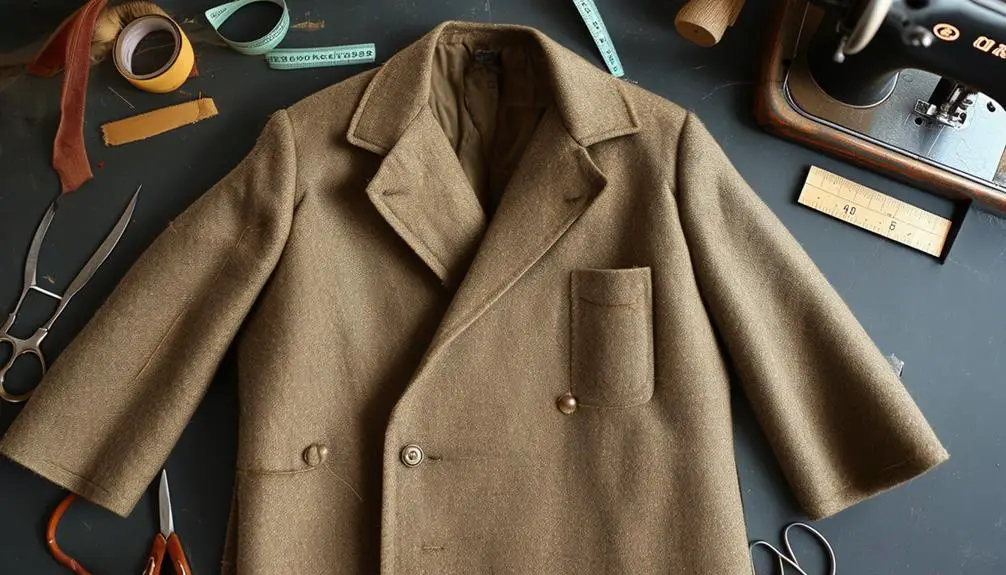
Transforming the collar and sleeves of your vintage wool coat can greatly enhance its fit and style. A tailor can reshape the collar by removing excess fabric and resewing it, achieving a more flattering silhouette that aligns with your personal preferences or current trends. This adjustment not only improves the coat's appearance but also guarantees it feels fresh and modern.
When it comes to shortening the sleeves, the process is equally straightforward. Your tailor will mark the desired length with tailor's chalk, cut the sleeves, and then hem them to prevent fraying. This adjustment typically costs around $20-30.
It's essential to maintain the proper curve and alignment with the shoulder seam during this process, guaranteeing that the coat retains its overall shape and doesn't lose its tailored look.
Cost of Tailoring Services
When considering tailoring services for your vintage wool coat, it's important to understand that costs can vary considerably based on the type of alterations you need.
Simple adjustments like sleeve shortening typically range from $20 to $30, making them an affordable option for quick fixes. If you're looking to shorten the length of the coat, expect to pay between $30 and $60. Body or waist alterations generally fall within the $40 to $60 range.
For more complex alterations, such as resizing or adjusting structured elements, you may face higher fees due to the increased labor and skill required.
Additional costs can arise if your coat features unique design elements like pockets or decorative accents that demand special attention during the alteration process.
To get a better idea of the specific costs involved, it's wise to seek local quotes or online estimates. Prices can vary greatly by location, so researching will help you budget effectively for your vintage wool coat's tailoring needs.
Ultimately, investing in the right alterations can transform your coat, ensuring it fits perfectly and looks stunning.
Selecting the Right Tailor
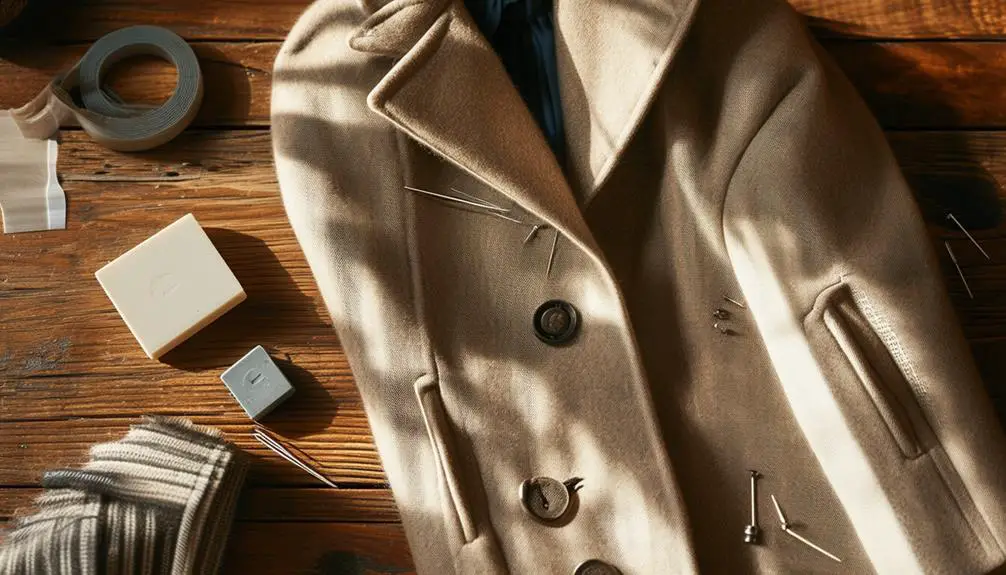
Choosing the right tailor for your vintage wool coat is essential for achieving the perfect fit and style. Start by prioritizing tailors with experience in structured garments, as they understand the complexities of wool fabric and its specific tailoring needs. You want someone who knows how to guarantee the shoulders fit perfectly and can enhance the overall silhouette.
Seek recommendations from trusted sources or check Yelp reviews to find tailors who've a proven track record of customer satisfaction. Don't hesitate to consult multiple tailors to compare their expertise, services offered, and pricing. This way, you can find the best fit for your specific alteration needs.
Before committing to significant alterations, consider testing a tailor with minor adjustments on other garments. This gives you insight into their skill level and attention to detail, guaranteeing they're a good match for your vintage coat.
An experienced tailor should be able to evaluate your coat's condition and design features, providing tailored solutions that elevate both fit and style. By taking these steps, you'll be well on your way to achieving a beautifully tailored vintage wool coat.
Assessing Coat Condition
Evaluating the condition of your vintage wool coat is vital before any tailoring begins. Start by examining the fabric for signs of wear like pilling, fraying seams, or small tears. These issues might need repair before moving forward with alterations, as neglecting them could affect the final look.
Additionally, consider the coat's history of Betty Barclay if it's from that brand, as understanding its background can influence your choices. Don't forget to check the lining for detachment or damage; an intact lining is important for a polished appearance post-alteration.
Next, try the coat on to gauge the fit. Note any areas that feel too loose or too tight, especially around the waist. You'll also want to look for any uneven hems or lengths that could complicate tailoring. Remember, tightly-knit wools are generally more durable but can be challenging to alter effectively.
Lastly, evaluate the coat's overall structure and design elements, like pockets and collar styles. These features can impact how much the alterations would cost.
Personal Fit Considerations
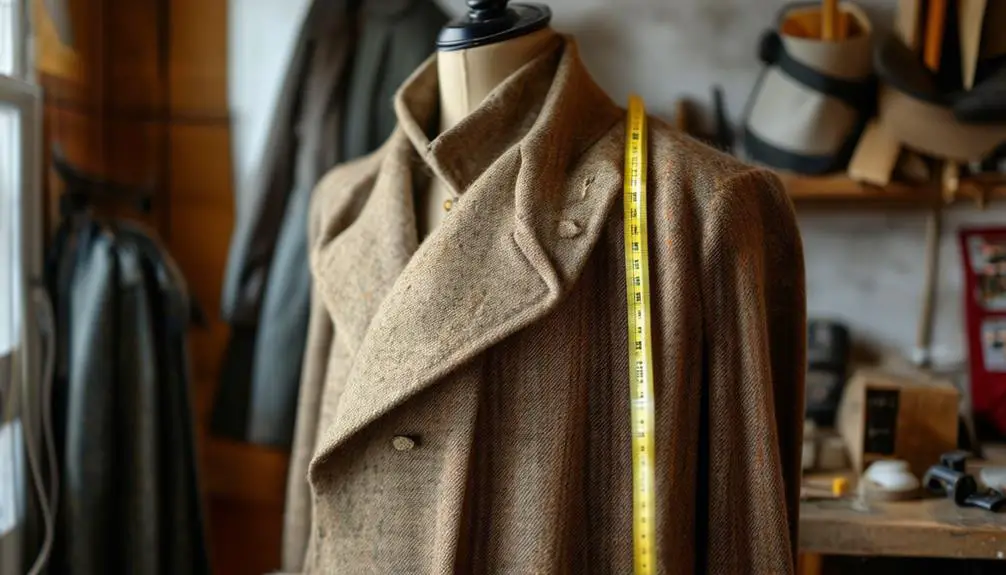
Tailoring a vintage wool coat hinges on your personal fit preferences, which can shape how you approach alterations. Individual tastes can greatly impact your decisions. Do you prefer a tailored silhouette or a looser fit for layering? Make sure to reflect on these factors before proceeding.
Here's a quick reference table to help you assess your fit preferences:
| Fit Preference | Pros | Cons |
|---|---|---|
| Tailored | Sleek appearance, structured | Might restrict layering |
| Loose | Comfortable, versatile | May look oversized |
| Custom | Perfect fit for your needs | Can be time-consuming |
When contemplating alterations, assess how you might want to layer underneath, like with sweaters or blazers. A loose coat can adapt better to various styles, while a tailored option may look sharp but limit your layering options.
Future use should also guide your alteration choices; think about how often and in what contexts you'll wear the coat. Finally, documenting your coat's current fit with photos can help you evaluate what adjustments are truly necessary when discussing with a tailor.
Tools for Tailoring
Once you've considered your fit preferences, it's time to gather the right tools for the job. For tailoring wool coats, having the right equipment makes sense and guarantees a professional finish.
Start with fabric scissors; they're essential for precise cutting, allowing you to achieve clean edges while preventing fraying.
A measuring tape is your next must-have. Accurate measurements are vital for achieving the desired fit during alterations, so don't skip this step.
Then, grab some tailor's chalk to mark your alterations directly on the fabric. This provides clear guidelines for cutting and sewing, making your process smoother.
You'll also want a sewing machine. It's highly recommended for efficient stitching and finishing seams, especially when working with bulky wool fabrics.
Finally, stock up on needles and thread suitable for wool. This guarantees durability and compatibility with your coat's material.
With these tools in hand, you're well-equipped to transform your vintage wool coat into a tailored masterpiece that fits you perfectly.
Happy tailoring!
Frequently Asked Questions
Can Wool Coats Be Tailored?
Yes, you can tailor wool coats to achieve a better fit. Common alterations include adjusting sleeve lengths and waistlines. For best results, find an experienced tailor familiar with structured garments to maintain your coat's integrity.
How Much Does Altering Wool Coat Cost?
Altering a wool coat typically costs between $20 to $60, depending on the type of alteration. For accurate pricing, get quotes from local tailors, as costs can vary based on complexity and location.
How to Make an Old Wool Coat Look New?
To make your old wool coat look new, regularly clean it, remove pilling, steam press for wrinkles, and consider altering its fit. Accessorize with trendy belts or brooches for a fresh, stylish update.
How to Reshape a Wool Coat?
To reshape your wool coat, assess its fit at key areas like the waist and shoulders. Consult a tailor for precise adjustments, ensuring the lining's also tailored for a polished and structured finish.


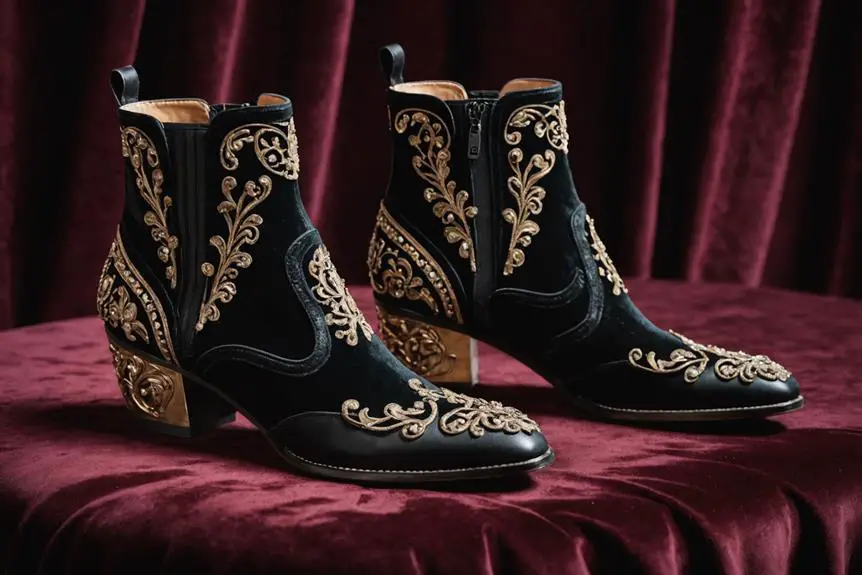
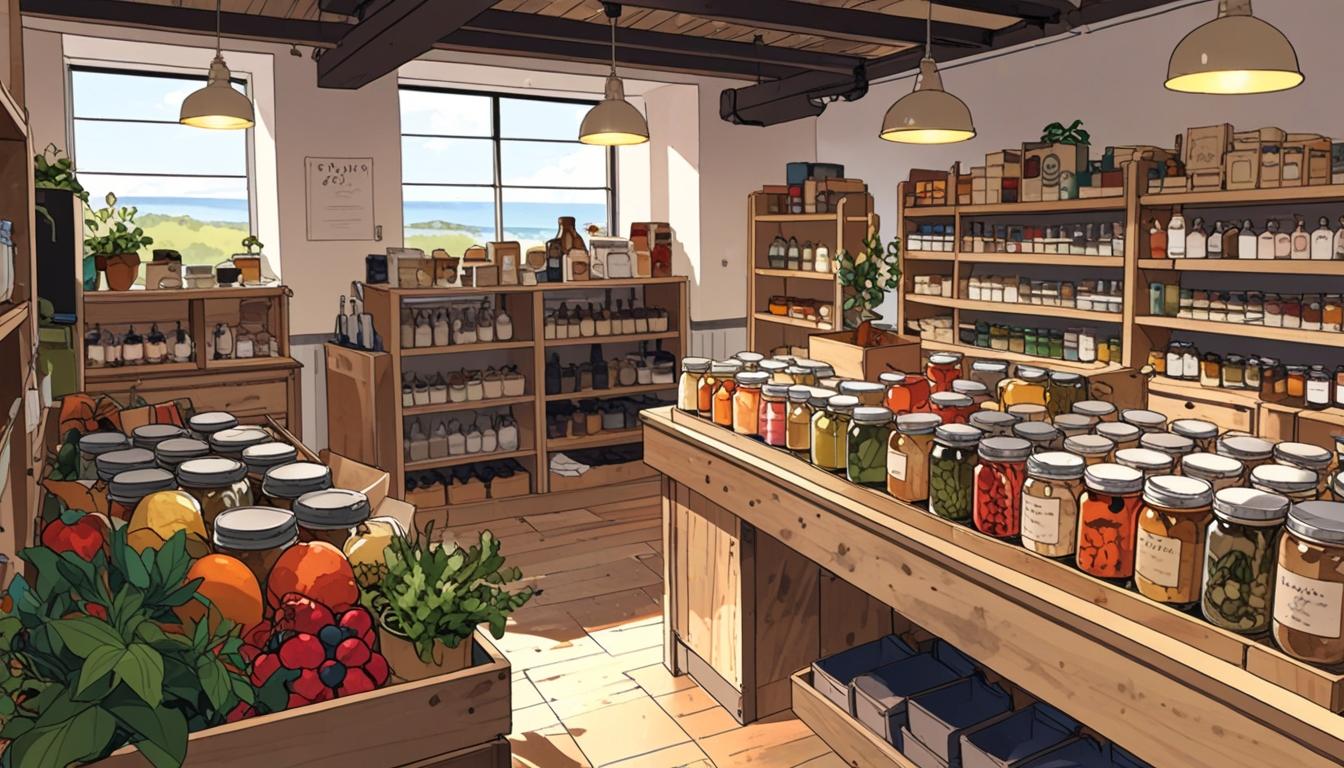

Your point of view caught my eye and was very interesting. Thanks. I have a question for you.